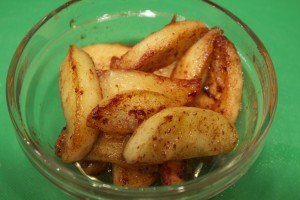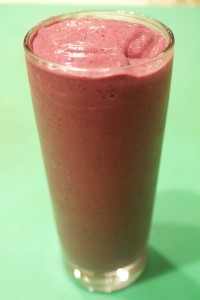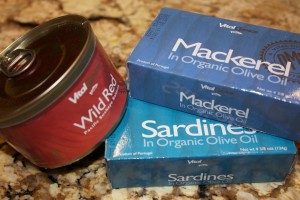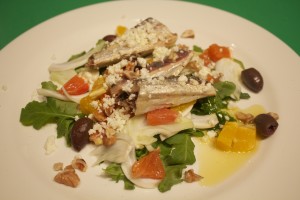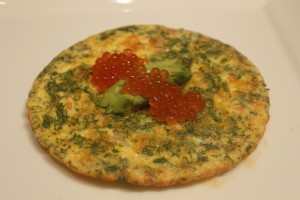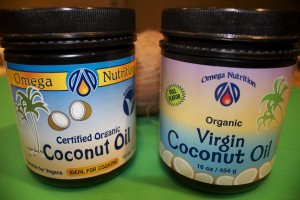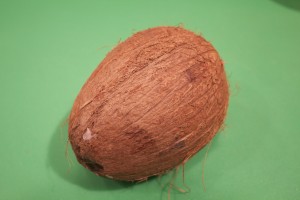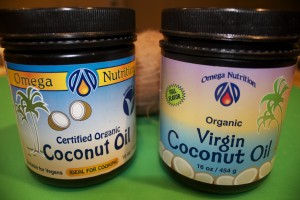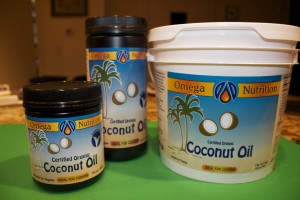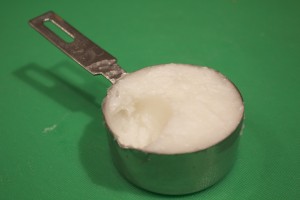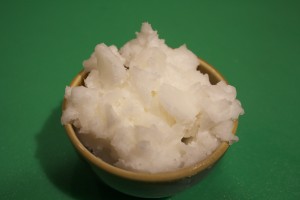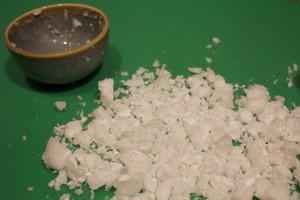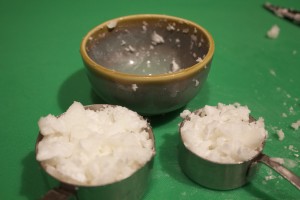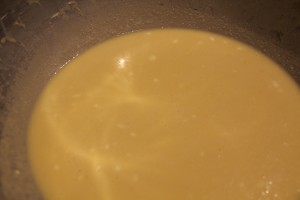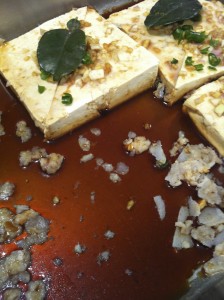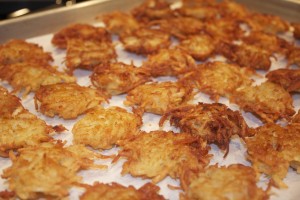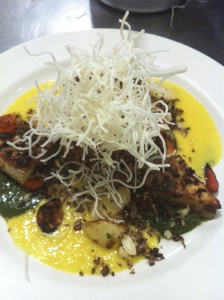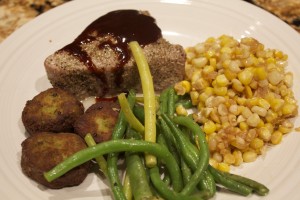
|
Sautéed Apples in Ghee One of my favorite quick morning dishes to make throughout the winter is sautéed apples in ghee. Ghee—clarified butter with the milk solids and water removed—is ideal for high heat cooking since it doesn’t burn as easily as regular butter. It still contains all the good qualities of butter, however, such as fat-soluble vitamins, short- and medium-chain fatty acids, and selenium. To get the most nutrition and best flavor, it’s best to purchase good quality ghee from cows that have been pasture-raised, or you can make your own from your favorite high quality butter. Sautéed apples are quick and simple enough to make for breakfast. In the video, I show my favorite way to peel and cut an apple. With a Y-shaped peeler—my favorite—I make a ring around the top and one around the bottom as well. I then peel the sides and quarter the apple. I lay the quarters on their sides, and cut out the core in one easy-angled cut. This is the most efficient way to core an apple, and you don’t need any special equipment. Best of all, it’s safe because, after coring the apple, you then have a flat side that rests firmly on the board. I then slice each quarter into 3 or 4 pieces. The next part is simple: I warm some ghee in a medium skillet over medium heat, add the apples and a dash cinnamon powder, and cover the skillet. I check on the apples after about 2 or 3 minutes, give them a toss, and cook them a couple of minutes more. That’s all there is to it: the tender apples smell and taste heavenly. They make a great topping for oatmeal, pancakes, waffles, or yogurt. They can also serve as a succulent side dish with scrambled eggs or other protein. Share on Facebook and Twitter | Breakfast, Fats & Oils, Fruit | No comments
Very Berry Power Smoothie Sometimes an antioxidant, nutrient-dense smoothie makes a quick and powerful meal. The one in this video is rich and filling enough to keep your energy and blood sugar stable for hours. Best of all, it tastes delicious. It’s a combo of mixed frozen berries, yogurt, avocado, raw honey, coconut oil, egg yolks from pastured eggs, and coconut water. I also added a splash of macadamia nut oil because I like the nutty flavor. I made this video for Vital Choice, a company whose products I love. Not only do they have the finest wild Alaskan seafood, but they also have some other choice products such as frozen berries and macadamia nut oil, an oil that has similar nutritional properties to extra virgin olive oil. They presented the video on their newsletter, and I received the question from a viewer of why I don’t use the egg whites in the smoothie. Here is my answer: I don’t use the raw egg white because it contains a protein called avidin that interferes with the body’s absorption of biotin (Vitamin B7). It also contains a protein called “conalbumin,” which binds to iron (making it not biologically available to the body.) Also, trypsin inhibitors make digestion of the protein in the raw egg white more difficult. All of these is deactivated when the white is cooked. That being said, I still may use a raw egg white in a classic Caesar salad dressing or–once in a great white, a mousse–but I don’t make a practice of it, especially for something like a breakfast smoothie. The raw yolk, on the other hand, is great to eat raw or barely cooked. It’s great to have a lot of quick breakfast ideas in your repertoire. Share on Facebook and Twitter | Breakfast, Eggs, Fats & Oils, Fruit, Health Tips, ingredients, Natural Sweeteners | No comments
Eating for Radiant Skin: part 3 A Word about Fat: Fat is important for skin health. It’s a mistake to be on a low-fat or no-fat diet. You need fat in order to digest, transport, and absorb Vitamin A,D,E, and K. It’s soothing to the nervous system. Every cell in the body has a surrounding membrane – which is where communication between cells take place – that is made up of fat. You need an array of fats. You need saturated fats to maintain structure; mono and polyunsaturated fats to maintain elasticity. All fats and oils that we consume are made up of a combination of monounsaturated, polyunsaturated, and saturated fats. Polyunsaturated fats, also know as omega 3’s and 6’s, are the ones your body does not make. These are called essential fatty acids because you have to get them from food sources. Omega 3’s are good for countering inflammation in the body. Good sources for omega 3’s are fatty fish such as sardines, anchovies, tuna, and salmon; nuts, seeds, and organic eggs. Because of the standard American highly refined diet, most people have far too many Omega 6’s and not enough Omega 3’s. The ideal ratio is somewhere between 1 to 4 times as much omega 6’s as 3’s. Most Americans get 20 times more omega 6’s than 3’s. Poor quality oils and feed lot meat contribute to an excess of Omega 6 fatty acids in the body. It is easy to get good quality Omega 6’s from whole nuts and seeds, where they are less likely to be rancid. Refined polyunsaturated oils are unstable; they are exposed to high temperatures, chemical solvents, light and oxygen. The essential oils in them are destroyed, and they are rancid and oxidized. They suppress the immune system and cause inflamation. Eating a lot of polyunsaturated oil increases cholesterol in the tissues and cell membranes. The best fats for cooking, which can take the heat without becoming rancid or oxidized, are butter, ghee (clarified butter), olive oil, coconut oil, and sesame oil. To get a good supply of omega 3’s, I turn to the tinned fishes that I keep in my pantry. From these pantry staples I have developed nutritious, delicious meals that I can get on the table in minutes. A couple of years ago I met the folks at Vital Choice when I was at the wise traditions conference. They had a lot of samples of their fish, including everything from the tinned mackerel, sardines, and salmon to the wild king salmon. They were by far the most delicious tinned fish I had ever tasted, and I was impressed with the flash frozen salmon as well. We were served smoked cod from them as a first course as well, another delicious fish they sell. I returned home from the conference with multiple tins of each pantry staple and I ordered a lot more stuff when I returned home. Now I make sure to keep a supply of the flash-frozen salmon as well in my freezer. (By the way, the Vital Choice catalogue is extensive, and among other products includes macadamia nut oil, dark chocolate, and a variety of different kinds of fish oil.) One of my super quick go-to lunches is either the mackerel (or sardines) mashed with avocado, lemon, and salt on a bed of greens. I eat it on a bed of greens. Here’s a quick video on how to make it: Here’s a composed salad made with the sardines: Here’s a quick video on how to make it: Another quick dish that I make a lot is with the flash-frozen wild salmon. Here’s the video on how to make this: This last dish is made with the canned salmon and fresh salmon roe. Salmon roe is a nutritional powerhouse, loaded with anti inflammatory omega 3’s as well as Vitamin A and D. Here’s how to make it: Delicious, nutritious, fast, and easy!
Share on Facebook and Twitter | Breakfast, Dinner, Eggs, Fats & Oils, Health Tips, Lunch, Main course, Pantry Items | No comments
The Healing Properties of Coconut Oil The fact that coconut oil is a highly saturated fat is a good thing. Your body needs saturated fats to most effectively use essential fatty acids (also know as EFA’s, the ones that your body needs to get from foods). Saturation is what keeps coconut oil from destabilizing or going rancid during cooking. All fatty acids are made of lengths of carbon chains. Saturation means that the chain of carbon atoms is fully “saturated” with hydrogen atoms. They have no double bonds between the individual carbon atoms of the fatty acid chain. There are many kinds of naturally occurring saturated fatty acids which differ mainly in the number of carbon atoms, ranging from 3 (extremely short chain), to 36 (extremely long chain). While all fats are made up of a combination of fatty acids, coconut oil is singular in that it is composed predominately of medium chain fatty acids (mcfas). The main mcfa in coconut oil is lauric acid, made up of 12 carbons (it makes up a whopping 47 per cent of the fat content in coconut oil). In your body, these high amounts of lauric acid are converted to monolaurin, and this is what makes coconut oil different from other oils and gives it its healing qualities. It is made only by the mammary gland and not in the liver, like other saturated fats. Coconut oil is found in large quantities only in mother’s milk, coconut oil, and palm kernel oil. Lauric acid has long been used in baby formulas. While longer-chain fatty acids, found in many foods, need to be digested by bile salts (which are secreted by the gallbladder), coconut’s medium-chain fatty acids do not. That’s why if you have trouble digesting fats, or are beginning to reintroduce fat to your diet, it’s best to begin with coconut oil. The medium chain fatty acids in coconut oil boost your metabolism. The body can use coconut oil for energy more rapidly and efficiently than any other fat source. Medium chain fatty acids are not normally stored in your body as fat. They are quickly converted to energy, making coconut oil ideal for weight loss. Many people find that they lose weight just by adding a couple of tablespoons a day of coconut oil to their diets. What a great oil to help prevent obesity. A number of years ago I happened upon an article in a “Women’s World” in a mainstream grocery store, which had an article titled “The Secret of Losing Belly Fat.” I was shocked to see that even this cheesy periodical contained some good information. They were on to the fact that coconut oil is utilized by the body to produce energy instead of being stored in the body fat like other dietary fats. The bad reputation that coconut oil undeservedly had for so many years (due to one study with hydrogenated coconut oil) is slowly crumbling. Nonetheless, the mainstream is still slow to change. Too many people are using copycat information, and too much money is invested in cheap oil production. Coconut oil is especially important to add to your diet if you are restricting calories. It will keep your metabolism humming along efficiently instead of slowing down; that’s what usually happens when calories are restricted. This oil is one of my personal “weapons” for keeping my weight to my desired level. Even though I normally cook with coconut oil; during those instances when I’ve packed on a few extra pounds, (like after a vacation), I bump up the amounts. I simply work a tablespoon coconut oil into each meal. It gets me back to my desired weight quickly and deliciously. Nowadays, coconut oil is even packaged into capsules as a weight-loss aide. Why take it in capsule form when it’s so easy to include in the diet? Coconut oil boosts energy and endurance and stabilizes blood sugar. In the 1940’s farmers attempted to use cheap coconut oil to fatten up their cows. It didn’t work: their cows instead became perky and lean. The famers then turned to soy and corn for more effective fatteners. Medium chain fatty acids found in lauric acid:
It is interesting to note that these oils have long prevented indigenous populations from bacterial and viruses found in the food supply. When populations switch from their traditional oils like coconut oil modern polyunsaturated oils, they have a hugely increased rate of modern illnesses. (I’ve witnessed this phenomena with friends and students from India and the Philippines.) The oil is good applied topically as well. It helps soften skin and relieve dryness and flaking. I used to have a recurring chest rash every year when the weather in New York got hot. Since using coconut oil regularly on my skin, I have not had a rash in almost 12 years! One of my students who had eczema reported that after only three weeks of applying the oil to his dry flaky skin, his condition was improved 70 percent. I lost track of him, so I was not able to discover whether his eczema completely cleared. More healing qualities of coconut oil:
Coconut oil is a traditional fat that has been used for many years in a multitude of cultures. Coconuts grow in the Philippines, Indonesia, India, Sri Lanka, Malaysia, Thailand, Vietnam, the Pacific Islands, in equatorial Africa, Mexico, Brazil, Jamaica, the Dominican Republic, and El Salvador. The trees produce between 50 and 100 nuts per year. They start yielding fruit at age six, and they continue to give off fruit for the next 55 or so years. Coconuts are ecologically sound, as they are able to grow in difficult environments, such as atolls, or under conditions of high salinity, drought, or poor soil. They play an important role in maintaining the fragile ecosystems of island and coastal communities. Moreover, most of the world’s coconut production comes from small farms. For more information on coconut, read Eat Fat, Look Thin, by Bruce Fife and Eat Fat, Loose Fat by Mary Enig and Sally Fallon.
Share on Facebook and Twitter | Fats & Oils | No comments
Working with Coconut Oil Young coconuts are large, green, and water-heavy. (Of course, by the time we see them in this country, the outer green shell has been shaved.) As a coconut matures, it becomes wizened, brown and hairy. The gel-like meat within becomes thicker and meatier. Coconut water is the sweet liquid inside the immature coconuts. Coconut milk is made from the pressed juice of grated coconut meat and water; coconut oil is the fatty oil that comes from the coconut meat. The oil, which used to have a bad reputation in this country, is now finally getting the attention it deserves for not only being a nutritional powerhouse but for its versatility in the kitchen. I have used coconut oil consistently for 12 years with great results. Coconut oil comes in two varieties: virgin, which has the flavor of a coconut, and an aroma-free filtered variety which is neutral-tasting. While I love the virgin coconut oil – and I use it frequently – there are many instances when I don’t want what I’m making to taste like a Thai dish. When I want the perfect oil to cook potato pancakes, for instance, I reach for the filtered aroma-free variety. This product still has all of the nutritional benefits of coconut oil without the predominant coconut flavor, which is removed in a vacuum process. Coconut and the oil come from tropical countries where they are exposed to high tropical temperatures. The oil can take the heat necessary to distill it and remove the coconut flavor without affecting the quality. There’s no trans fat byproducts either, so you don’t have to worry that you’re compromising your health. I love the oil from www.omeganutrition.com. I was first introduced to their products 12 years ago; they have the best filtered coconut oil that I’ve ever tasted; this is the brand that got me hooked . Their other products are of the highest quality as well, so you won’t go wrong with whatever you order. They ship fast; you’ll get your products within just a few days. You can order the oil in all different sizes, from a 1-pound canister to a 7-pound pail (my favorite). You don’t have to worry that the coconut oil will go bad; even after you open the jug, it lasts two years at room temperature! At room temperature, coconut oil is semi-solid. It melts at 76 degrees, so if your pantry is warm, you may notice how the consistency changes. Although the oil may have melted, this is not a problem. It can melt and solidify back and forth without damaging the oil in the least. If you’re baking with coconut oil and converting from butter to coconut oil, use 7 tablespoons coconut oil instead of 1 stick butter. Butter contains 20 per cent water, so you need to lessen the oil a bit. The easiest way to measure 7 tablespoons is to scoop ½ cup into a dry measure and then remove 1 tablespoon. Measure coconut oil in the form that you need it in. For example, say you’re making a cookie and you are going to cream the oil with sugar. You will need the oil in its semi-solid state. Measure it right out of the container. If you need it in liquid form, melt some coconut oil (it only takes a minute or two to melt) in a pan over a low flame, and then measure it. If you want to work coconut oil into a pastry crust and you need it super firm, place a glob in the refrigerator to harden it. Chop the hardened coconut oil first on a cutting board, then place the pieces in measuring cups. Pulse the oil into the dry ingredients in a food processor. There’s an easy and delicious coconut oil pastry crust recipe on p. 51 in my book The Healthy Hedonist Holidays. When you need a tablespoon or two to sauté something, it doesn’t matter whether or not the oil is melted or semi-solid. Just scoop some oil out of the container, add it to the skillet, and you’ll find that it will melt quite readily. Be concerned with exactitude only when baking. Furthermore, it’s best to have the other ingredients in your recipe at room temperature before mixing with the coconut oil. In contact with cold ingredients, the oil will start to seize; you’ll then have little clumps of hardened oil in your mix. A quick whirl in the blender will take care of any hardened bits. If your marinade looks like the following picture, just place the pan in the oven. A few seconds in the heat will melt the coconut oil just fine. You can also place your ingredients over a double boiler, and gently heat the mix. It doesn’t take long for everything to get up to 76˚F, the melting point of coconut oil. Coconut oil has a high smoke point, up to 375˚F, which makes it the ideal oil for frying, and your food won’t taste greasy. (Use the filtered variety when frying.) Hands down this is the best oil for making potato pancakes, cutlets, croquettes, falafel, or any recipe that calls for a substantial amount of oil. These are crispy, not greasy. Since you won’t want to waste this gorgeous oil, just put enough oil to go halfway up the side of whatever you are cooking. That’s enough to cook the first side; flip to finish cooking the other side. The virgin oil is the best choice when you want a hint of tropical flavor. It makes buttery-tasting popcorn, stellar roasted vegetables, and creamy root vegetable purées. One of my favorite vegetable combinations at the moment is puréed parsnips mixed with rutabagas or kohlrabi, enriched with virgin coconut oil and butter. Talk about a creamy, satisfying texture! The virgin oil makes a tasty spread on crackers, bread, muffins, and mocha as well. The flavorful virgin oil is also the better choice if you want to utilize the oil as a supplement to stabilize your blood sugar and keep your metabolism humming at high speed. You can use the virgin variety as a moisturizer for your face and body. Try slathering your entire body with the oil before taking a shower. You’ll come out of the shower clean and soft – not greasy – without having to use soap or moisturizer. You can also work coconut oil into a blend. This combination is inspired by Mary Enig’s blend of oils: mix 1/3 part extra virgin olive oil (or macadamia nut oil for a really subtle flavor), 1/3 part unrefined sesame oil (not the toasted variety), and 1/3 part aroma-free coconut oil. The resulting oil is mild-tasting and has a combination of healthful properties from all three oils. You can keep the oil at room temperature, and use it for sautéing and for salad dressings. It also make s a wonderful oil for mayonnaise. Deviled eggs, anyone? We’ll save that for another day. .
Share on Facebook and Twitter | Coconuts, Fats & Oils, Kitchen Tips, Pantry Items | No comments
Olive Oil Poached Tuna I had corn left over from the duck confit meal, and I had edamame cakes that I had previously frozen, so I decided to work my dinner around those. Since I was near Chelsea Market, I stopped in The Lobster Place (lobsterplace.com/), one of the best fish markets in New York City. I picked up a couple of gorgeous chunks of tuna to poach in olive oil that I had already in my refrigerator. You can oil poach with tuna, salmon, halibut, and shrimp, and use the oil as much as four times. Don’t worry – the oil doesn’t smell, because you are heating it to 120˚F, which is really low. The oven is heated to 225˚. You need a thermometer – a probe is the best variety. I have a Poulder, but any type is good. You need to have enough oil in the pan to be able to immerse your fish in oil and your skillet should have straight sides. I rubbed the steaks with a combination of salt, pepper, and ground fennel. My refrigerated oil looked solid (extra virgin olive oil is a monounsaturated fat, which goes semi-solid when cold) but it quickly melted over low heat. As soon as the oil had melted, I added the thermometer. I hold back on some of the oil, because it is easy to overshoot the 120˚F. When that happens, I can add a glob of cold oil and lower the temperature quickly. Otherwise, I simply wait for the oil to cool until the proper temperature. Add the fish (make sure it’s completely immersed) and place the skillet in the oven for 25 minutes. When ready, remove the fish and strain the oil. I served the fish with the following recipe for Teriyaki Ketchup from my book The Healthy Hedonist. In the book it’s paired with a tuna burger. 2 tablespoons shoyu (natural soy sauce) 1/4 cup sake or mirin (substitute with dry sherry) 2 tablespoons maple syrup 2 teaspoons tomato paste 1 teaspoons dijon mustard
Share on Facebook and Twitter | Dinner, Fats & Oils, Recipes, Sauces | No comments
|
